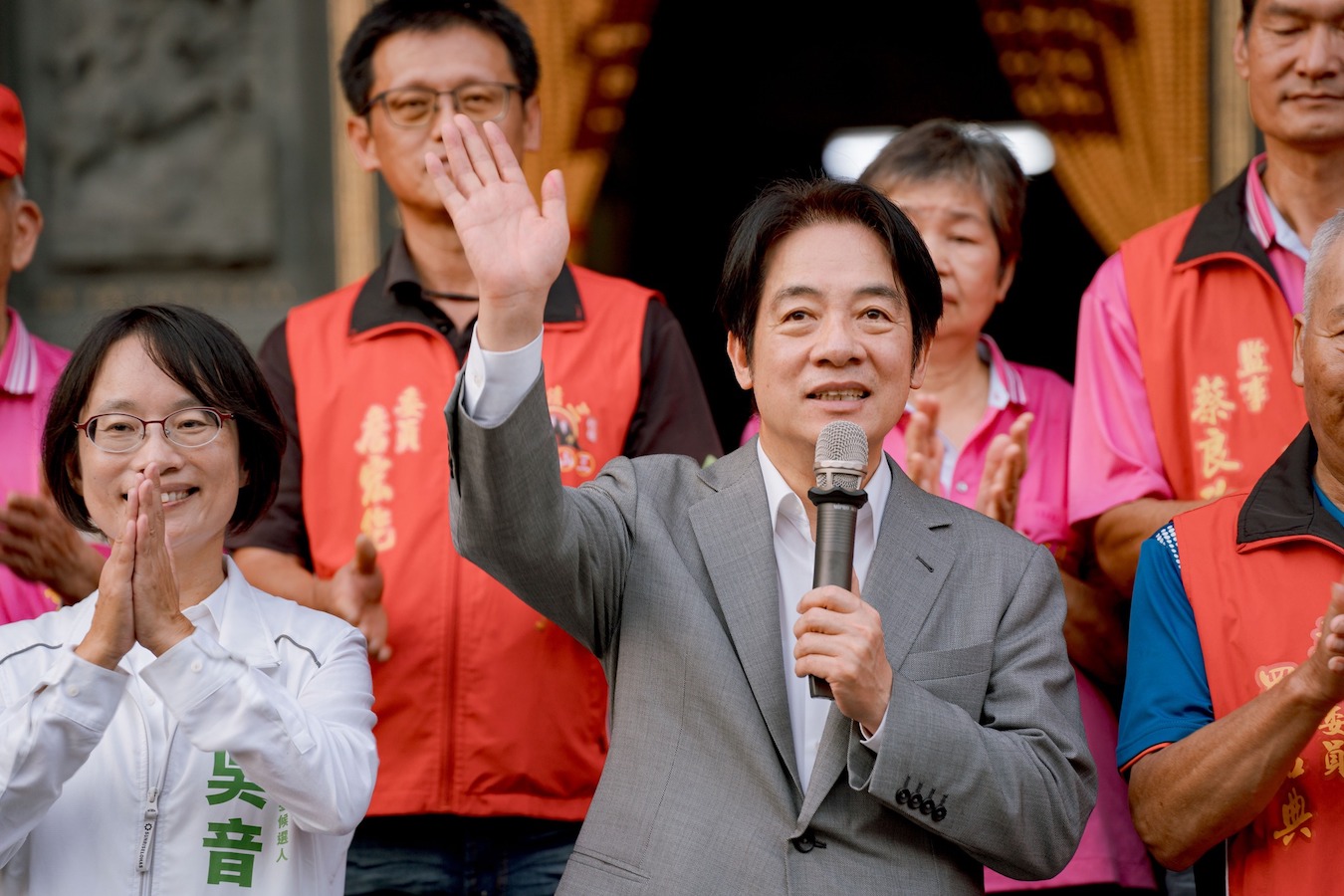by Brian Hioe
語言:
English
Photo Credit: Hou You-yi/Facebook
THE KMT UNVEILED its energy policy in August. In particular, the plan calls for lowering the percentage of energy from natural gas-fired power plants to 45% by 2030. Hou You-yi, the KMT’s presidential candidate, claims that coal-fired power plants will be phased out by 2040, when 34% of energy will be produced by gas-fired plants. By 2050, renewable energy will be 57% of Taiwan’s energy according to this plant.
By 2050 under this plan, 18% of Taiwan’s energy needs will come from nuclear energy, with coal replacing nuclear energy by 2040. This is around double the current 10% or so of Taiwan’s energy mix that comes from nuclear energy.
The KMT claims that this plan will phase out fossil fuels more quickly than the DPP, with fossil fuels making up 59% of the energy mix by 2030. The DPP’s plan, by contrast, is 70%.
Nuclear energy only constitutes one part of the KMT’s overall energy policy, but is what has been most focused on in political discourse–by supporters as well as opponents.
 KMT presidential candidate Hou You-yi. Photo credit: Hou You-yi/Facebook
KMT presidential candidate Hou You-yi. Photo credit: Hou You-yi/Facebook
The nuclear energy issue has been highly controversial in Taiwan for decades. Part of the controversy stems from questions about where to store nuclear waste. However, to this extent, many fears return to concerns about the possibility of nuclear disaster given Taiwan’s frequent seismic activity. Such fears were reinvigorated after the 2011 Fukushima earthquake and tsunami, which led to a catastrophic meltdown of the Fukushima Daiichi nuclear reactor.
At present, the KMT has announced plans to restart nuclear reactors including the controversial Gongliao Reactor No. 4, as well as to extend the lifespans of Taiwan’s existing reactors. The Gongliao Reactor is especially controversial because of the numerous stops and starts during its construction.
Nevertheless, the issue of Reactor No. 4 is seemingly unable to be pried apart from the issue of nuclear energy writ large. As such, successive KMT politicians have called for restarts for Reactor No. 4 as part of a wave of other restarts, attacking the Tsai administration for shuttering nuclear power plants. The KMT depicts the pan-Green camp as irrationally opposed to the usage of nuclear energy.
This, too, has been the case with Hou, who has also called for a restart for Reactor No. 4. Nevertheless, as Gongliao Reactor No. 4 is located in New Taipei, the DPP has framed this as Hou betraying the voters of New Taipei.
Hou leaning into nuclear advocacy is relatively late and may be intended to shore up support within the pan-Blue camp, by leaning into a traditional platform of the KMT. In particular, as part of its campaigning, the KMT capitalizes on nostalgia for a previous era of Taiwan in which economic growth was strong, during which it held power as the sole ruling party–the authoritarian period. This was also a period in which nuclear energy constituted a significantly higher portion of Taiwan’s energy mix, constituting 52.4% of all power consumed by Taiwan in the mid-1980s. During the period, nuclear energy was framed as a key element of Taiwan’s scientific successes.
In this sense, the KMT’s nuclear advocacy is linked to its embrace of political nostalgia. To this extent, the DPP’s opposition to nuclear energy is linked to its origins in the Taiwanese democracy movement, during which environmental protests were a substrate of opposition to the KMT. The KMT was framed as ruthlessly exploiting Taiwan’s natural resources because of its goals of returning to Taiwan, while in line with national identity concerns, the DPP framed itself as interested in the responsible stewardship of Taiwan’s national resources.
Nevertheless, interestingly enough, in present times the issues of Taiwan’s national security and its energy needs have become linked. Although the KMT has otherwise framed itself as being able to dial back tensions with China if it were to come to power, in announcing his energy policy, Hou stated that lowering the amount of natural gas used by Taiwan to 45% of Taiwan’s overall energy mix is because of national security concerns. Namely, Taiwan imports 99% of its natural gas, but this supply would be cut off in the event of a Chinese invasion.
 DPP presidential candidate William Lai. Photo credit: William Lai/Facebook
DPP presidential candidate William Lai. Photo credit: William Lai/Facebook
This is a substrate of the nuclear energy debate as well, in that nuclear reactors could be used as power sources in the event of an invasion. But, ironically, the DPP is the historically anti-nuclear party, while the KMT–which claims to be the only party in Taiwan able to conduct dialogue with the CCP–is the party that is pro-nuclear. But during the present election cycle, this issue was brought up by Foxconn founder Terry Gou in a manner that pressed DPP presidential candidate William Lai into stating that he would be willing to accept the use of nuclear energy during emergencies.
But, to this extent, the KMT is increasingly leaning into attacks on renewable energy itself. Often the allegation is that pan-Green politicians are linked to renewable energy companies and they only back them because of financial links. Such allegations were made against DPP legislator Lai Pin-yu regarding her father, a former DPP legislator, over his links to renewable energy companies.
This may be leveraging on the KMT having an older party base that is less familiar with renewable energy, leading the party to use attacks on the concept of renewables in itself, and suggesting that the DPP only advances such policy because of illicit links to green energy companies. For its part, the DPP has defended itself by pointing to how KMT politicians also have financial links to green energy companies, but these attacks may continue.

